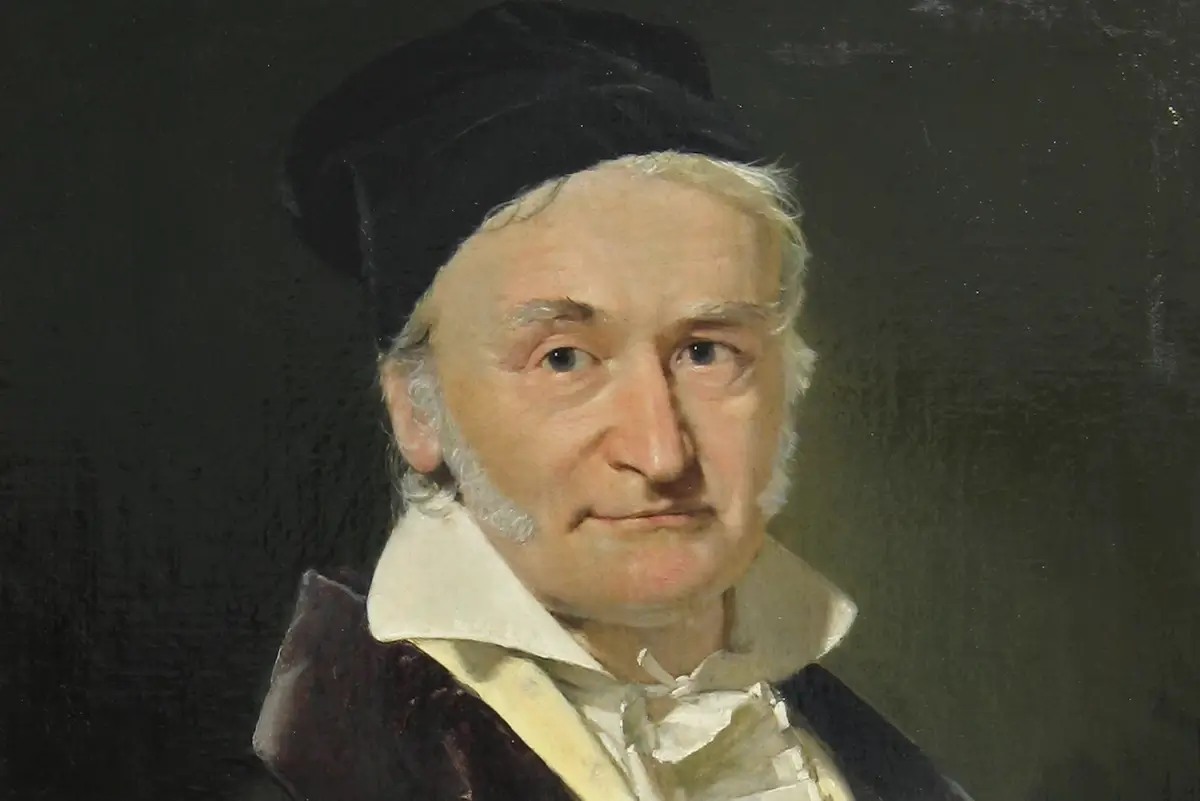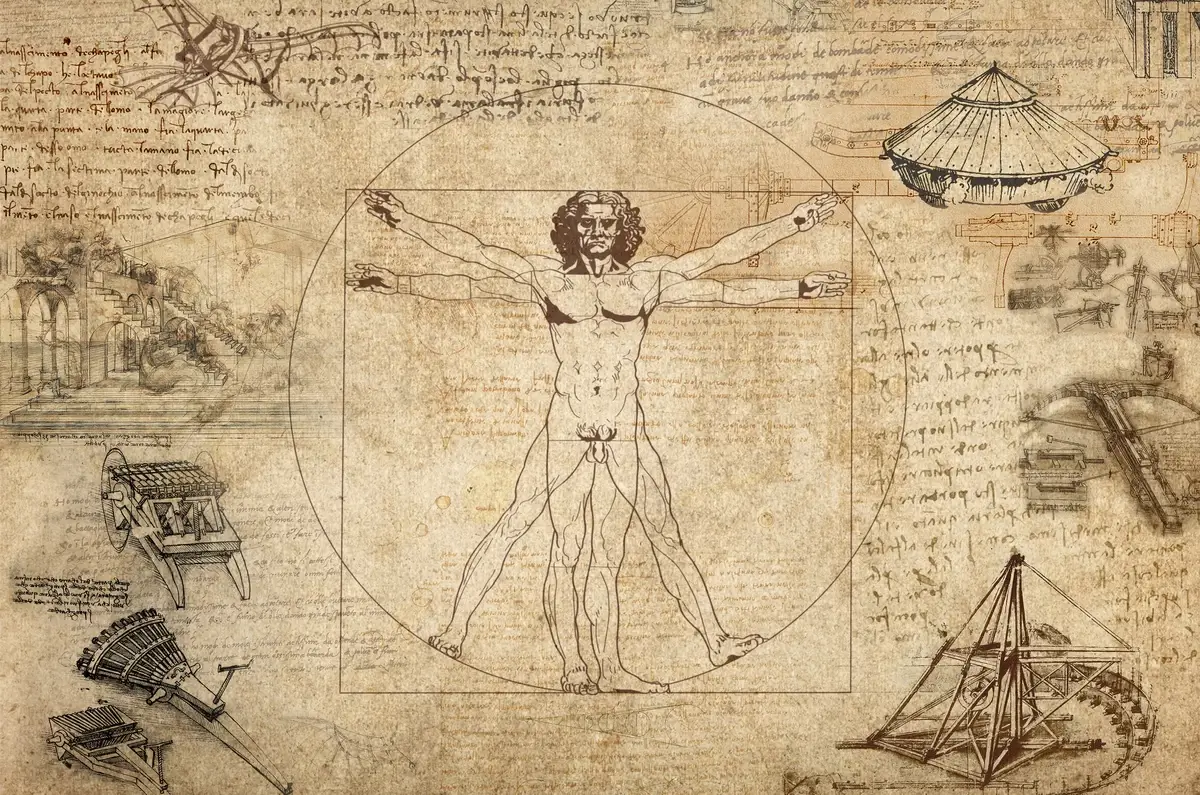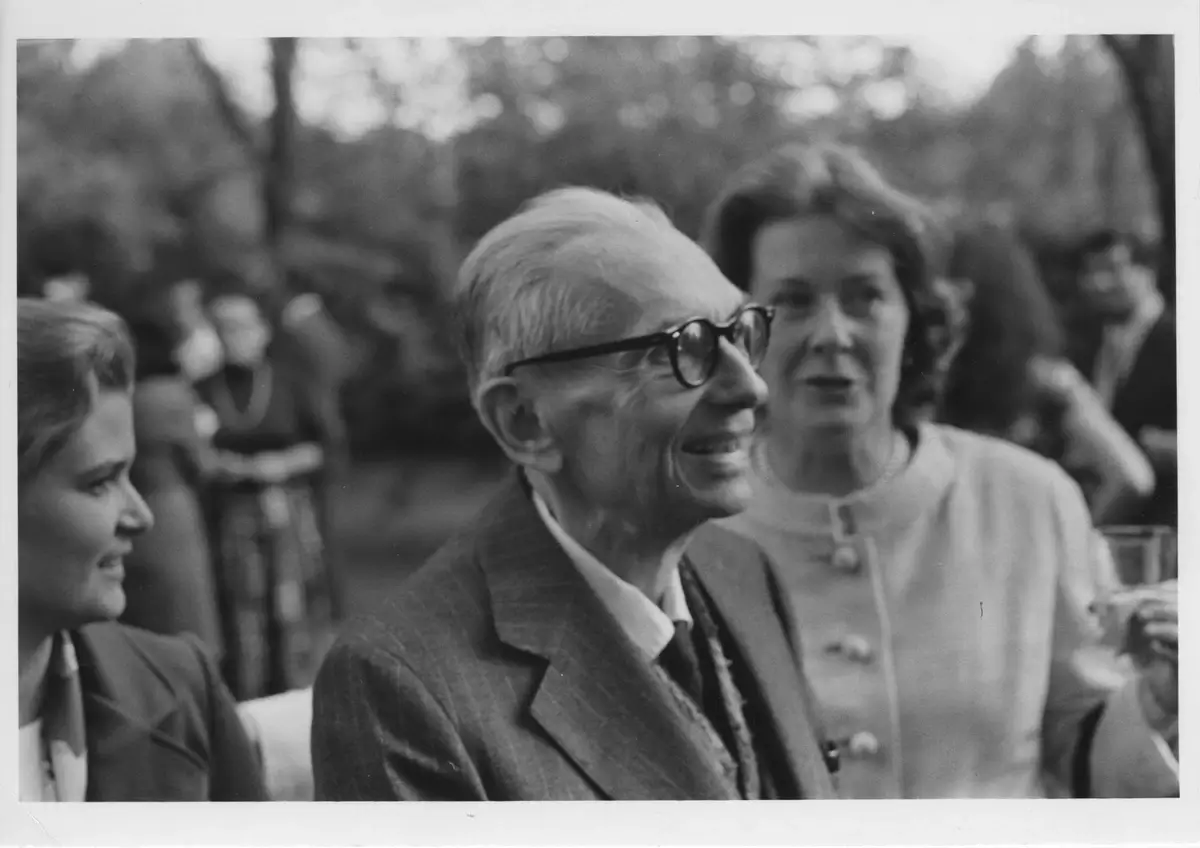When you hear the word “math”, what’s the first thing that pops into your mind? For many, it’s memories of blackboards filled with formulas or the thrill of cracking a particularly hard algebraic problem in high school. Yet, mathematics in daily life is so much more than just a subject you learned in school. It’s a realm filled with mysteries, quirks, and countless ah-ha! moments.
Did you know there’s a good chance that two people in a room of 23 share the same birthday? Or that bees use math to build their honeycombs? Journey with us through these 30 fun facts about math, as we explore the fascinating, the intriguing, and the downright cool aspects of this age-old science.
1. Zero’s Journey from India to Europe
Ah, the number zero. It’s hard to imagine our world without it, yet there was a time when this seemingly simple concept was non-existent in European mathematics. The zero, as we know it today, actually originated from India.
By the 5th century, Indian mathematicians were using a symbol for zero in positional notation. This revolutionary concept then made its way to the Islamic world and was introduced to Europe in the Middle Ages through translations of Arabic mathematical texts. So, the next time you scribble down a ‘0’, remember its exotic journey from the Indian subcontinent!
2. The Magical Number of Nature: Fibonacci Sequence
Mother Nature loves math too, especially the Fibonacci Sequence! This series starts with 0 and 1. Every subsequent number is the sum of the two preceding ones (0,1,1,2,3,5,8,13…). Now here’s the cool fact: You can spot these numbers in the spirals of sunflowers, pinecones, and even the breeding pattern of rabbits!
The sequence was introduced to the west in “Liber Abaci,” a book written by Leonardo of Pisa in the 13th century. But it’s not just a fun math fact; this sequence has its ties to the golden ratio, which has been used in art and architecture for centuries!

Image source: pixy.org
3. Why 7 is the World’s Favorite Number
Here’s a number game for you. Ask a bunch of people their favorite number, and more often than not, you’ll hear the reply: seven. In fact, when a global survey was conducted, seven emerged as the world’s favorite number. But why?
From the seven wonders of the ancient world to seven days in a week, this number holds special, almost magical significance in cultures worldwide. It appears often in religious texts, fairy tales, and popular myths. This simple, yet amazing fact underscores the universal appeal of numbers and their profound impact on human psyche.
4. The Birthday Paradox: More Common Than You Think
Okay, party enthusiasts, this one’s a treat! Imagine you’re in a room with 23 people. What are the chances that two of them share the same birthday? Instinct might scream, “Low!”, but in reality, it’s a staggering 50%. By the time there are 70 folks, it shoots up to 99.9%! Mind-boggled?
This isn’t some mathematical prank; it’s a classic example of probability theory known as the Birthday Paradox. While it seems counterintuitive, it goes to show that human intuition isn’t always in sync with the intriguing world of mathematics.
5. Honeycomb Conjecture: Nature’s Mathematics
Bees: those tiny architects of nature that build intricate honeycombs, and as it turns out, they’re pretty good at math too. The hexagonal pattern of honeycombs isn’t just a design marvel; it’s the most efficient way to fill space without any gaps while using the least amount of building material.
Mathematicians buzzed about this for centuries, referring to it as the “Honeycomb Conjecture.” It was only proven in 1999 by Thomas Hales. This amazing fact highlights how mathematics in daily life isn’t confined to textbooks; it’s in the very design of nature!

Image by Freepik
6. The Impossibility of Trisecting an Angle
For all you geometry fans, here’s a real noggin scratcher. Trisecting an angle using only a straightedge and compass has been a challenge that many a mathematician has tackled. However, spoiler alert, it’s impossible!
This problem has its roots in ancient Greek geometry and is one of the three famous problems of antiquity. It wasn’t until the 19th century that the quest was laid to rest, proving the impossibility. Such an interesting fact, right? It serves as a testament to the enduring mysteries of mathematics that even the brightest minds grapple with.
7. The Tale of a Tortured Genius: Ramanujan
When talking of remarkable mathematicians, it’s hard to overlook the genius that was Srinivasa Ramanujan. Born in India in 1887, with almost no formal training, he scribbled out complex theorems, some of which confounded even the seasoned experts of his time.
After a pen-pal relationship with the famed G. H. Hardy at Cambridge, Ramanujan traveled to England. Their collaboration is the stuff of legends! However, his tale is also one of tragedy. Battling health issues and cultural isolation, he passed away at the young age of 32. His legacy? Notebooks filled with theorems still being plumbed for their depth and significance.

Image source: Wikimedia Commons
8. Pythagoras: Not Just a Theorem
Ah, Pythagoras! To most of us, he’s the guy behind that triangle thingy we learned in high school. But behold, this ancient Greek was much more than just a theorem. Founder of a movement that was part religious cult and part mathematical school, he believed numbers were the ultimate reality behind everything.
Interestingly, there’s no concrete evidence that Pythagoras himself proved the famous theorem. Many of his group’s discoveries were attributed to him. His believers, known as Pythagoreans, practiced strict lifestyles, even believing certain numbers had distinct personalities. Now that’s taking number love to a whole new level!
9. Pizza and Math: The Story of Pi
If math were a meal, π (Pi) would be a mouthwatering slice of pizza. Representing the ratio of a circle’s circumference to its diameter, its value is approximately 3.14159. But let’s be real – this cool fact isn’t just about circles.
The quest to calculate more and more digits of Pi has been a historical mathematical endeavor. Currently, we know over 31 trillion digits! From ancient Egypt to supercomputers, the journey of Pi is as roundabout and endless as the circles it represents. And yes, while its full value remains elusive, enjoying a pizza on Pi day (March 14th) has become a delightful tradition.
10. The Unsolvable Three Utilities Problem
This one is a classic brain-teaser that has intrigued puzzle enthusiasts for decades. Imagine three houses and three utilities: water, gas, and electricity. Can you connect each house to all three utilities without any of the lines crossing? Take a moment, give it a go.
Here’s the interesting fact: It can’t be done on a flat surface! This problem highlights the complexities and limitations of planar graphs. While it may seem like a simple puzzle, it lays the foundation for understanding more intricate networks in mathematics.
11. Benoit Mandelbrot: The Beauty of Fractals
Enter the mesmerizing world of fractals, and one name stands out: Benoit Mandelbrot. This mathematician introduced the term “fractal” in 1975 to describe shapes that look the same at any magnification. Think of a coastline. The closer you look, the more details emerge, but the overall pattern remains consistent.
Mandelbrot’s studies in this realm led to the discovery of the famous Mandelbrot set, a set of numbers with a stunningly beautiful and infinitely intricate visual representation. This amazing fact showcases the blend of art and math, proving that numbers can be as bewitching as any masterpiece.

Image source: wixmp.com
12. Prime Numbers: The Mysterious Building Blocks
Enter the enigmatic world of prime numbers—those numbers greater than 1 that aren’t products of two smaller natural numbers. Seem simple? Think again. These numbers have been a source of curiosity for millennia, puzzling the greatest minds from ancient to modern times.
Here’s a fun fact about math: mathematicians are still trying to crack the code behind the distribution of prime numbers. There’s even a $1 million prize for anyone who can solve the Riemann Hypothesis, a conjecture related to primes. So, if you fancy yourself a math whiz, there’s a fortune waiting!
13. Math and Sunflowers: The Golden Angle
Sunflowers aren’t just for sunny selfies; they’re a testament to the beauty of mathematics in daily life. Ever notice the mesmerizing pattern in a sunflower’s center? It follows the Golden Angle – approximately 137.5 degrees, derived from the Golden Ratio.
This isn’t random. This pattern allows the maximum number of seeds in the least amount of space. Voilà, nature optimizing space with math! It’s the same principle seen in other spirals, from hurricanes to galaxies.
14. Knot Theory: Not Your Ordinary Knots
Forget shoelaces and nautical knots; knot theory dives deep into a dimension where simple loops get tangled in complex ways. But these aren’t physical strings; they’re abstract, continuous loops in 3D space.
The big question here? When are two knots the same? Mathematicians have been untying (pun intended) this problem for decades. The interesting fact is that while it might seem esoteric, knot theory has real-world applications in DNA research and quantum physics!
15. Harvey Mudd College’s Famous Math Problems
Students at Harvey Mudd College aren’t just scribbling down equations for grades; they’re tackling some of the most famous unsolved problems in math. Every year, the college presents its students with a list of unsolved math problems. Crack one, and not only will you be etched in math history, but there’s also a monetary reward!
While the problems are notoriously difficult (few have been solved), the tradition emphasizes the ongoing journey of discovery in math. And for those who take on the challenge, it’s not just about the solution, but the thrill of the chase.

Image by gpointstudio / Freepik
16. A Dicey Situation: Probability in Craps
Roll the dice and try your luck! Craps, the classic casino dice game, is all about chance. But here’s an interesting fact: behind the thrill and noise of the craps table, there’s a world of math and probability playing out with each throw.
For example, the chances of rolling a 7 with two dice? A sizzling 6 out of 36. But go for that elusive snake eyes (rolling two ones)? That drops to a cooler 1 in 36. This dicey dance of numbers has made craps a fascination not just for gamblers but also for statisticians.
17. The Four Color Theorem: A Coloring Conundrum
Here’s a splash of color for your mathematical palette: Can you color any map using just four colors, ensuring that no neighboring countries share the same shade? Mathematicians pondered over this for over a century!
Introduced in 1852, the Four Color Theorem remained an unsolved riddle until 1976. And when it was finally proven, it wasn’t in some grand hall but through a computer checking hundreds of cases. This proof sparked debates about the role of computers in mathematical proofs. Talk about a vibrant controversy!
18. Mobius Strip: One Side, One Boundary
Take a strip of paper, give it a half-twist, and then join the two ends. Voila, you’ve got a Mobius Strip! But this isn’t just any loop; it has the mind-bending property of having only one side and one boundary.
If you start drawing a line on a Mobius strip without lifting your pen, you’ll end up back where you started without ever flipping the paper! This geometric wonder has applications from magic tricks to the world of molecular chemistry. A simple twist, yet it opens doors to a world of infinite possibilities!
19. Numbers in Pop Culture: Music and Math
When you groove to your favorite tunes, ever think of math? Probably not! But from the rhythms to the scales, music is imbued with mathematics. Take the “golden ratio,” for example. Composers from Beethoven to the Beatles have structures in their compositions that mirror this mathematical proportion.
Moreover, many famous musicians, like Tom Lehrer, have been math enthusiasts. In his words, “There’s a Delta for every Epsilon.” So, the next time you jam to a beat or marvel at a lyrical melody, remember there’s a hidden world of numbers playing in the background.
20. Gauss: A Math Prodigy from Birth
Meet Johann Carl Friedrich Gauss, often touted as the “Prince of Mathematicians.” This isn’t just some grand title; his genius was evident from childhood. Legend has it that at the tender age of seven, Gauss found a quick way to add up all the integers from 1 to 100, stunning his teacher.
Over his lifetime, he made groundbreaking contributions across numerous areas in math: from number theory to magnetism. His prowess even spilled over into astronomy! Mathematicians today still marvel at the depth and breadth of his work.

Image source: elementarium.cpn.rs
21. The Eerie World of Imaginary Numbers
Numbers you can count, sure. Numbers you can measure, absolutely. But numbers you can’t even imagine? Enter the mysterious world of imaginary numbers. Based on the imaginary unit (represented as ‘i’), which is the square root of -1 (a number that doesn’t exist in the realm of real numbers), they form the backbone of complex numbers.
While the name suggests they might be a mathematician’s fantasy, these numbers have real-world applications, especially in engineering and physics. So, the next time someone says, “Imagine this,” maybe they’re just talking math!
22. The Biggest Known Prime: Always Growing
Prime numbers, indivisible by anything other than 1 and themselves, are foundational to the structure of numbers. The intriguing question remains: just how large can these prime numbers get? The journey to discover the largest known prime is an enduring endeavor. Currently, the title of the largest known prime number is held by a number that’s 2 raised to the power of 77,232,917, subtracted by 1. Imagine a number with over 23 million digits!
These colossal prime discoveries aren’t merely for mathematical prestige. They play critical roles in the realm of computer encryption systems, safeguarding our digital data. As they ascend in magnitude, their significance in our tech-driven world concurrently amplifies.
23. Math in Art: The Vitruvian Man
Leonardo da Vinci, famed for his art, was also an avid mathematician.
His masterpiece, “The Vitruvian Man,” is a perfect blend of art and mathematical proportions. This drawing, showcasing a man in both square and circular frames, is based on the work of the ancient architect Vitruvius.
Vitruvius believed that the human body was a model of symmetry and proportion, and Leonardo’s illustration beautifully captures this notion. The arms and legs’ positions form both a square and a circle, which was Leonardo’s effort to relate the human body to the geometric shapes, encapsulating the idea that our very existence can be described through numbers and ratios.
This iconic piece isn’t just a testament to the genius of Leonardo but also to the timeless marriage between mathematics and art. It’s a reminder that numbers don’t just belong in the realm of cold calculations but can breathe life into the most profound artistic expressions.

Image source: pixy.org
24. Odds of Perfect March Madness Bracket: Near Impossible!
March Madness, the annual college basketball extravaganza, isn’t just about dunks and buzzer-beaters; it’s a statistical war zone. The odds of predicting a flawless bracket? A mind-boggling 1 in 9.2 quintillion! If you think those are just abstract numbers, consider this: you’re more likely to win the Powerball lottery… multiple times.
While there are ways to improve your odds using basketball knowledge and statistics, a perfect bracket remains the Holy Grail in sports predictions. So, the next time your bracket busts, remember the math was never really on your side!
25. Math Behind the Egyptian Pyramids
The Great Pyramids of Giza, one of the Seven Wonders of the Ancient World, are not just architectural marvels; they’re a testament to the ancient Egyptians’ deep understanding of mathematics. The precise angles, the alignment with celestial bodies, and the golden ratio’s presence in their dimensions are a testament to this.
The mathematical precision ensured these pyramids stood the test of time. This amazing fact underscores how math was integral to creating structures that would remain for millennia, making us wonder: what ancient mathematical secrets are still waiting to be discovered?

ripato / Freepik
26. Math Teachers’ Most Dreaded Day: April 15
April 15, infamously known as Tax Day in the U.S., isn’t just feared by those scrambling to file their taxes. For math teachers, it’s often the day students come in with last-minute questions about tax forms, realizing math does play a role in the real world!
Interestingly, the labyrinth of numbers on tax forms is a stark reminder of mathematics in daily life. Whether it’s determining deductions, calculating taxable income, or just making sure everything adds up correctly, April 15 stands as a yearly testament to the importance (and occasional headaches) of practical math.
27. Napier’s Bones: Ancient Calculation Tools
Long before calculators and computers, there was John Napier’s ingenious invention in the 17th century: Napier’s Bones. These weren’t actual bones but a set of numbered rods that made multiplication, division, and even roots more accessible.
Using a method based on the lattice multiplication and the Arab method of multiplication, these ‘bones’ were a popular calculating tool for centuries. They paved the way for more advanced mechanical calculators. Looking back, it’s astounding how these primitive ‘bones’ were precursors to today’s advanced computing marvels.

Image source: Wikimedia Commons
28. From Math to Philosophy: Gödel’s Incompleteness Theorems
Kurt Gödel, in the early 20th century, sent shockwaves through the mathematical world that resonated deeply into philosophy. His Incompleteness Theorems proposed that in any consistent mathematical system, there are statements that can’t be proven or disproven within that system.
Beyond its profound mathematical implications, Gödel’s work touched upon deeper philosophical questions about truth, knowledge, and the limits of human understanding. This isn’t just a math fact; it’s a philosophical quandary. Can we ever truly understand the entirety of our mathematical universe?

Image source: albert.ias.edu
29. When Numbers Get Political: Gerrymandering
Math isn’t always neutral; sometimes, it plays a role in the political arena. Enter gerrymandering, the act of drawing electoral district boundaries to favor one party over another. On the surface, it seems purely political, but at its core, it’s a numbers game.
Using complex algorithms and data, politicians can carve out districts that ensure their party’s advantage. The fight against gerrymandering, interestingly, also employs math. Geometric and statistical tools are used to identify oddly shaped districts and promote fair representation. Who knew mathematics had such a significant role in the ballot box’s fate?
30. The Origin of Mathematical Symbols
Ever stopped to ponder where mathematical symbols come from? The ‘+’ or ‘-‘ signs, the ‘=’ equality, or even the mysterious ‘π’? The history of these symbols is as intriguing as the formulas they help construct.
For instance, the ‘+’ sign originates from the Latin word ‘et,’ meaning ‘and,’ while the ‘=’ symbol was first used by Welsh mathematician Robert Recorde in the 16th century. He chose two parallel lines as they were a pair of things he knew to be “of equal length.” From mere notations, these symbols have grown to become universal languages in themselves, underscoring the evolution of mathematical communication.
FAQ
What are the 4 basic operations in math?
The four basic operations in mathematics are addition, subtraction, multiplication, and division. They form the foundational skills that we build upon as we progress in our mathematical journey. With just these four operations, a vast array of more complex calculations can be performed. From simple arithmetic like adding up grocery bills to advanced equations that help launch rockets, these four operations are the cornerstone of all things mathematical.
What is the hardest math fact?
The term “hardest” can be subjective, but in the realm of challenging mathematical conundrums, one stands out: the Riemann Hypothesis. Proposed in 1859 by Bernhard Riemann, it revolves around the distribution of prime numbers. While it sounds straightforward, this hypothesis has evaded proof for over a century and a half. Such is its significance that there’s a reward of one million dollars for anyone who can provide a definitive proof.
What is the best thing about math?
Mathematics, at its core, is a universal language. Its beauty lies in its objectivity and consistency. No matter where you are in the world, 2 + 2 will always equal 4. This universality allows for collaboration and understanding across cultures and disciplines. Moreover, math provides tools to understand and describe the world around us, from the orbits of planets to the construction of architectural marvels. Its applications are endless, making it not just a subject to be studied, but a tool for innovation, discovery, and progress.
What is a fun fact about math history?
Ancient civilizations had a knack for mathematics! The Babylonians, around 4,000 years ago, had a surprisingly accurate approximation for the square root of 2, which they inscribed on a clay tablet. They used their own base-60 numerical system, akin to how we use minutes and seconds today. This historical tidbit shows that the drive to understand and apply mathematics has been a part of human civilization for millennia.
How interesting is math?
Math is a world of wonders! While it may seem daunting to some, it unfolds as a tapestry of patterns, logic, and beauty to those who dive deep. Every theorem has a story, every equation has a rhythm, and every number holds a mystery. From the spirals of galaxies aligning with the Golden Ratio to the mind-bending properties of quantum mechanics, math offers a lens to view, understand, and appreciate the intricacies of the universe. It’s not just about numbers; it’s about connections, insights, and the eternal dance of logic and creativity.





